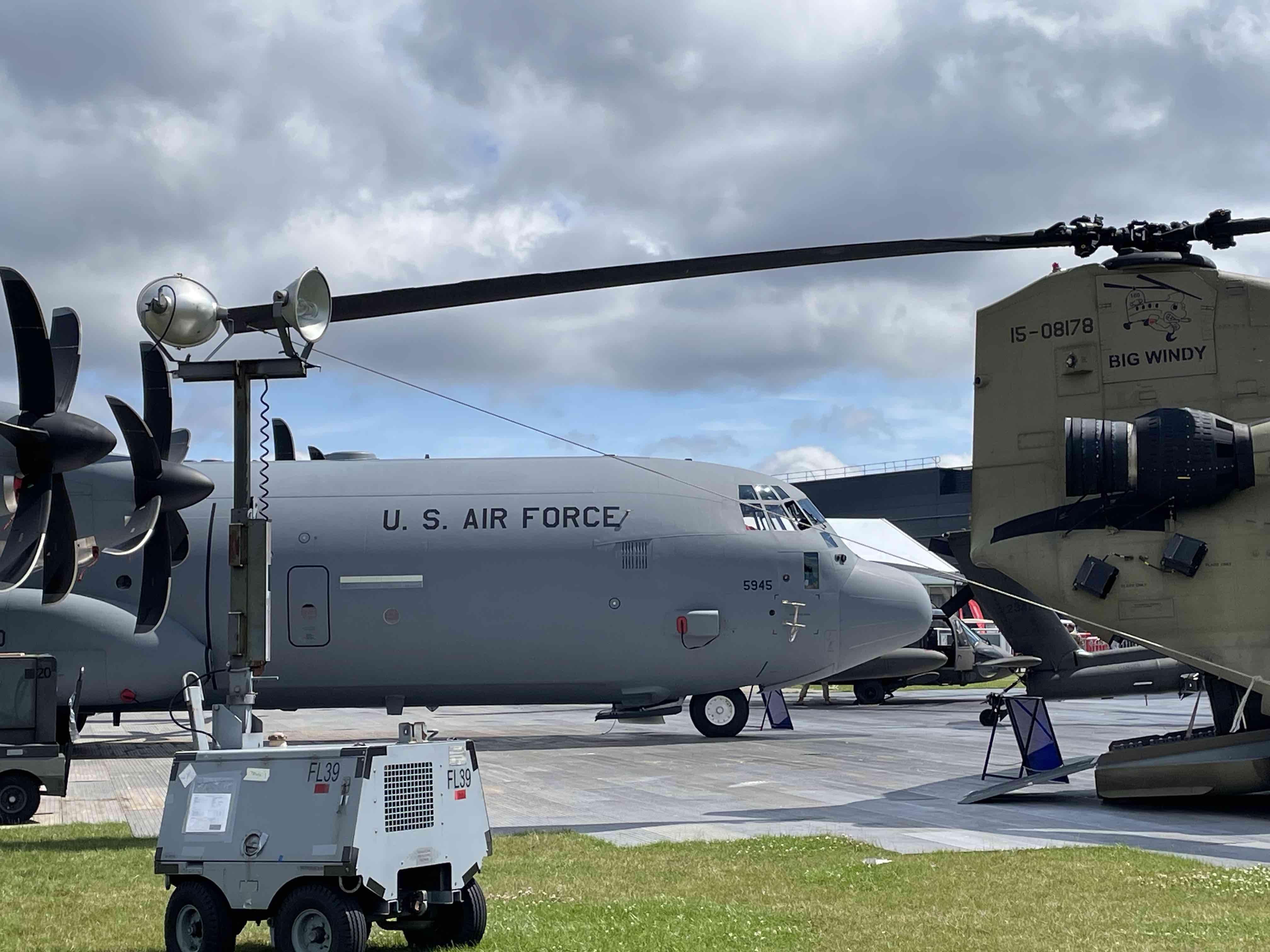
A Kentucky Air Guard C-130J tucked away at the back of the U.S. Defense Department static display at Farnborough Airshow 2024.
FARNBOROUGH—Lockheed Martin’s C-130J Super Hercules is alive and well—really.
As the Farnborough Airshow opens a new stage for the intensifying rivalry between the U.S. tactical airlifter and its Brazilian-made competitor, the Embraer C-390, Lockheed officials still claim the venerable Super Hercules is winning.
“We’re building 20 aircraft a year, and we intend to be in production up until the year 2040 or beyond,” says Nicholas Smythe, head of international business development for the program.
Those two claims sometimes run counter to a popular narrative that the three-decade-old Super Hercules—not to mention the 72-year-old, overall C-130 program—has passed its peak.
An 18-month order spurt from June 2022 to December 2023 by the C-130’s nearest competitor—the jet-powered Embraer C-390 Millennium—flipped three C-130 operators: Austria, the Netherlands and South Korea. Embraer signed contracts with the two European countries July 22 on the first day of Farnborough Airshow.
Despite those losses, demand for the C-130J remains strong, Smythe says.
“It’s been interesting to kind of talk through a lot of the mythbuster stuff that’s been out there as I’ve gotten into this role,” Smythe says.
Over the same 18-month period, in fact, Lockheed received commitments and orders from Australia, the Philippines and the U.S. government.
Lockheed is operating sales campaigns in more than 10 countries, including known competitions underway in India, Saudi Arabia and Sweden, Smythe says. The U.S. government still wants to replace dozens of aging C-130Hs in the Air National Guard and Air Force Reserve with the Super Hercules. The U.S. Navy, meanwhile, plans to soon replace a fleet of E-6Bs with the EC-130 for the Take Charge and Move Out mission, which transmits messages to nuclear submarines using a 5-mile-long, very low frequency antenna.
“All I know is, we've got really strong demand across several continents, and we're going to be in production for a really long time,” Smythe says.
The program’s future opportunities come in defiance of the C-130's longevity. One of the airlifter’s contemporaries, the Boeing B-52, remains in service, but only the Hercules survives in production. Boeing stopped building B-52s over 60 years ago.
Lockheed has delivered more than 2,700 C-130s, including over 540 C-130Js, and the fleet has amassed over 3 million flight hours.
In addition to continued production, Lockheed is defining the next system upgrade for the Hercules family now called the Block X.
“The things that we’re looking at in Block X include extending the range of the aircraft … looking at things like single-pilot operations and then also looking at other general capabilities that are going to make the [Hercules] more survivable in that Western Pacific environment,” Smythe says.
To extend the range, Lockheed engineers are redesiging the tubes and pumps in the center wingbox to create space to add about 600 gallons more fuel. Flight tests are scheduled to begin later this year on the new configuration.
Demonstrations also are underway to allow the C-130 to be operated by a single pilot.
“That’s not to say we’re going to single-pilot operations,” Smythe adds. “It’s to have the flexibility to do so if you need to in certain environments.”





